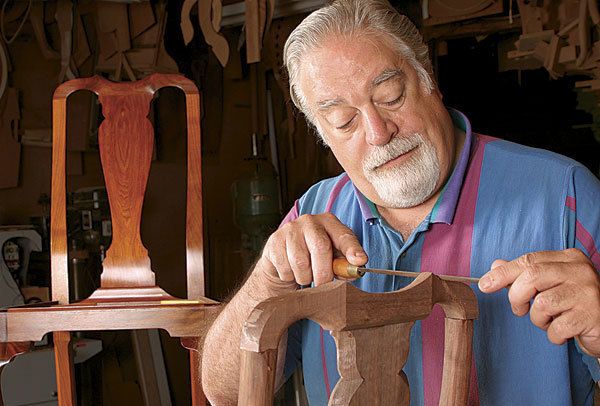Shaping Wood by Hand
A few simple hand tools allow you to create any shape imaginable.

Synopsis: Even if you have an impressive stable of power tools at your disposal, sometimes it is easier and quicker to shape wood the old-fashioned way. Used for generations because they are efficient, the spokeshave, rasp, bench chisel, and scraper are still the best and often the safest tools for a wide variety of shaping jobs. Alfred Sharp demonstrates how to shape wood quickly and accurately using a spokeshave, and how to tune up a spokeshave for the best performance. He also explains how to sculpt wood using rasps and files, carve with a bench chisel, and clean up the surface with a card scraper.
From Fine Woodworking #208
Before the days of portable power tools—or any power tools for that matter—craftsmen were able to generate any shape they wished in any wood. Remarkably, the tools they used—the spokeshave, the rasp, the bench chisel, and the scraper—are still the best tools for a wide variety of shaping jobs. Indeed, some tasks can only be accomplished using these tools. And even when a power tool can do the job, the hand tools are often quicker to use, especially if only one or two pieces of wood are involved. A power tool may require considerable setup time, whereas you can just whip out these hand tools and start making shavings.
There are other benefits to mastering these tools. They are much safer than power tools, with minimal noise and no power-propelled chips and dust, so you’re freed from earmuffs and eye protectors. And often little or no sanding is needed before starting the finish.
To demonstrate, I’ll create parts for a Queen Anne chair. The varying curves and shapes of the legs, back splat, crest rail, and shoe are best shaped with hand tools.
The tools I’ll discuss take up very little room, and the set costs only a few hundred dollars—less if you purchase used tools. With this relatively small outlay and some practice, you’ll be capable of rendering the most complex and sinuous sculptural shapes imaginable for modern or traditional furniture.
SPOKESHAVES REMOVE WOOD QUICKLY YET DELICATELY
My favorite tool for shaping wood is the spokeshave. Spokeshaves are like handplanes for curved surfaces and, as their name implies, were originally used to fashion wagon-wheel spokes. They can be used to clean up bandsaw marks on any curved surface, to round over the sharp ridges between the curved planes of a cabriole leg, or to cut the tapered elliptical shape on the curved back legs and crest rails of Queen Anne and Chippendale chairs. Spokeshaves come in several shapes and configurations, but you can do 90% of your work with two flat-bottomed shaves: the metal type with a frog to position the blade, and the wooden shave with a very low-angle blade (see drawings, above).
The way I use them runs contrary to the practice of most woodworkers, who use wooden shaves for heavy stock removal and metal shaves for finishing the surface. While it is true that the wooden shave’s lower angle can wedge deeply into the wood and take a big chip, there is also the potential tearout that results from that wedging action. When hogging off, I like the control and more self-limiting nature of the metal shave.
For the full article, download the PDF below:
Fine Woodworking Recommended Products

Stanley Powerlock 16-ft. tape measure

Marking knife: Hock Double-Bevel Violin Knife, 3/4 in.

Bahco 6-Inch Card Scraper








Log in or create an account to post a comment.
Sign up Log in